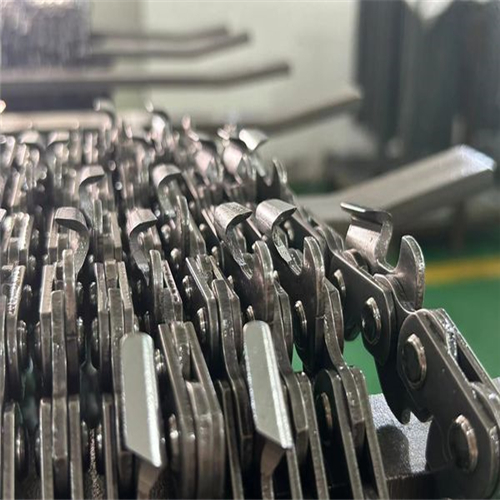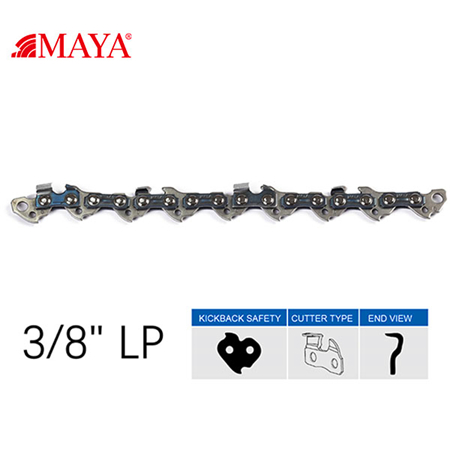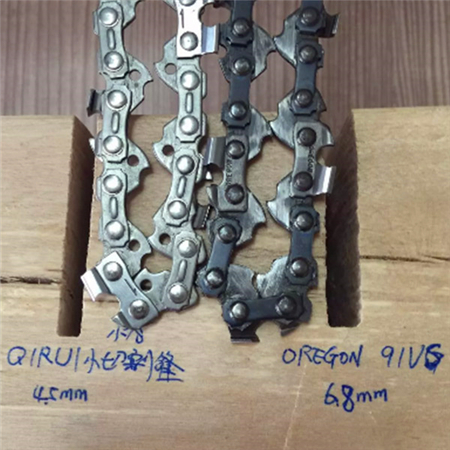Contact Us


News content

Chainsaws are invaluable tools for many professionals and homeowners, but they can sometimes run into problems that hinder their performance. Understanding how to troubleshoot and fix common saw chain issues can keep your chainsaw running smoothly. In this guide, we'll explore some common saw chain problems and provide practical solutions to help you master troubleshooting.

One of the most common issues chainsaw users face is a dull chain. Symptoms include difficulty cutting through wood, increased vibration, and smoking. For example, imagine trying to cut through a thick tree trunk, but your chainsaw struggles to make progress, causing excessive shaking and emitting smoke due to the friction. To resolve this, sharpen the chain using a file or electric sharpener. For instance, using a file, you can carefully restore the sharpeness of each cutting tooth, ensuring they are all uniformly sharp. Follow the manufacturer's guidelines for the correct sharpening angle and technique. This ensures that each tooth is sharpened to the proper angle, optimizing cutting performance.
A loose chain can derail or slip off the bar during use, leading to unsafe operation and potential damage to the chainsaw. Imagine trying to cut through a log, only for the chain to suddenly come loose and stop spinning, interrupting your work and posing a safety hazard. To prevent this, ensure the chain is properly tensioned according to the manufacturer's guidelines. For example, if your chainsaw manual recommends a specefic amount of slack, such as 1/4 inch, ensure the chain meets this requirement. A properly tensioned chain should have a little slack but should not sag beneath the bar. You can check the tension by pulling the chain away from the bar slightly; it should move freely without drooping. Proper tensioning not only improves cutting performance but also prevents the chain from coming off unexpectedly, ensuring a safer and more efficient cutting experience.
If your chainsaw is cutting at an angle or leaving a rough surface, the chain may be dull or damaged. This can happen if the chain has hit hard objects like rocks or metal, causing the cutting teeth to become misaligned or dull. Check the chain for any visible signs of damage, such as missing or broken teeth, and replace it if necessary. Proper tensioning and sharpening can also help resolve this problem. For example, if the chain is not properly tensioned, it may not make proper contact with the wood, leading to uneven cutting. Similarly, if the chain is dull, it may tear rather than cut through the wood, leaving a rough surface. Regularly inspecting and maintaining your chainsaw can help prevent these issues, ensuring smooth and efficient cutting.

If your chain is jumping or skipping during cutting, it may be due to a worn or damaged drive sprocket. The drive sprocket is responsible for transferring power from the engine to the chain, and if it is worn, it may not engage properly, causing the chain to slip. Inspect the drive sprocket for signs of wear, such as worn teeth, and replace it if necessary. Also, check for any damaged or worn-out parts in the chain that may be causing the issue. For example, a damged or bent guide bar can cause the chain to ride up and down, leading to skipping. Regularly maintaining your chainsaw, including cleaning and lubricating the chain, can help prevent these issues and ensure smooth cutting operation.
Regularly inspecting and maintaining your saw chain can help prevent excessive wear and prolong its lifespan. This includes cleaning the chain after each use to remove dirt and debris, as well as regularly sharpening the cutting teeth to maintain their sharpness. Additionally, replace any damaged or worn-out parts promptly to prevent further wear. For example, if you notice that the chain is becoming loose more frequently, it may be a sign that the chain or guide bar is wearing out and needs to be replaced. By staying proactive with maintenance, you can prevent excessive wear and ensure your chainsaw performs optimally for longer.
If you chain gets stuck in the wood, avoid the temptation to force it out, as this can damage the chain and the bar. Instead, use a wedge or a hammer to carefully pry it out. Start by inserting the wedge or the tip of the hammer into the cut and gently tapping it to create a small gap. Then, use the wedge of the hammer to gradually widen the gap until the chain comes free. This method is safer and less likely to cause damage than trying to force the chain out. Regularly inspecting your chainsaw and keeping the chain sharp and well-maintained can help prevent it from getting stuck in the wood in the first place.
By mastering troubleshooting for common saw chain problems, you can keep your chainsaw running smoothly and efficiently. Remember to always follow safety precautions when working with chainsaws and consult a professional if you are unsure about any repairs.

More
Explore the diverse world of chainsaw chains and discover the best fit for your cutting needs. From standard versatility to professional-grade full chisel options, ensure safety with low-kickback chains. Dive into specialized designs like square ground chains and understand the importance of safety chains in towing. Make informed choices for efficient and secure chainsaw operations.
Ensure optimal chainsaw performance and safety by selecting the right guide bar length. Explore the factors influencing your decision and make informed choices for efficient cutting tasks.
Understand the four chain saw guide types. It is well known that the needs of loggers are as diverse as the terrain and environment in which they work. Understanding the different types of chain saw guides and choosing the correct saw chain guide can make them better and faster to complete their work.
More
Email: qirui@qiruibar.com
Tel:0086-571-82308666
Add: No. 390, Xiangdafang Industrial Park, Wenyan Street, Xiaoshan District,Hangzhou,Zhejiang,China
Website: www.qiruibar.com



Contact Us
Contact Us
